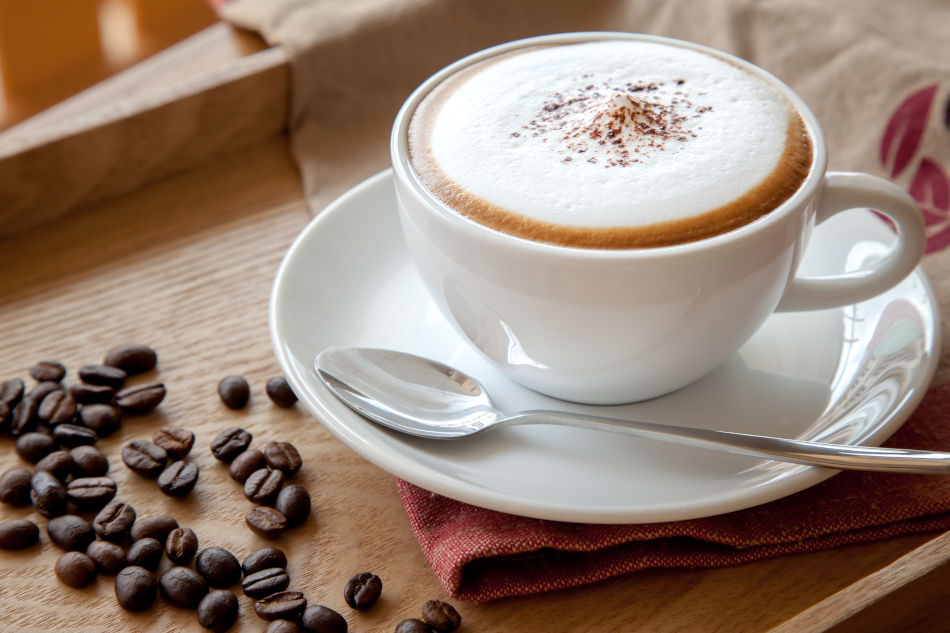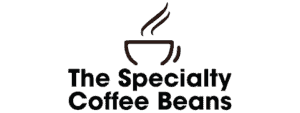Cappuccinos are a delicious, go-to coffee drink that contains hot milk, steamed milk foam, and espresso. It’s these small, concentrated espresso shots that imbue every Cappuccino with its rich coffee flavor and give you that extra boost of energy. But the key to the perfect Cappuccino is portioning since too many expresso shots can be overpowering while too few can be underwhelming, so what amount is just right?
The average Cappuccino measures between 3-4 ounces, but no more than 6 ounces, and contains a single espresso shot. Traditionally, this drink is made with a 1:1:1 ratio of espresso to milk to foam and placed in a 5-6 ounce cup.

If you’re a coffee connoisseur interested in making your Cappuccino at home or learning a bit about its history, then this article is for you. Here, we’ll discuss why a properly made Cappuccino shouldn’t have more than one shot of espresso, and, for those of you here strictly for caffeine purposes, we’ll also answer the burning question of how much caffeine these tiny drinks contain.
Do All Cappuccinos Contain a Single Espresso Shot?
Anyone familiar with the world of coffee knows that baristas and coffee enthusiasts alike deem the creation of these beverages to be nothing short of an art form.
Because of this, there are very strict rules regarding beverage size, temperature, how fine the coffee beans should be ground, and so many more. Portioning is only one element of this vast equation and is not consistent for every espresso-based drink, but is it the same for every Cappuccino?
Experts recommend that a Cappuccino be made of 1 ounce of espresso (equivalent one shot), 1 ounce of hot milk, and 1 ounce of foam for an overall serving size of 3 ounces. The ratio of these ingredients may change for various Cappuccinos, but the portioning of espresso shots is consistent.
If you’re ordering a Cappuccino from a local café, you have the freedom to ask them for additional espresso shots. Still, the customary way to create this beverage is with one placed in a 5–6-ounce cup to allow its flavors to aerate properly.
However, it is not uncommon for distributors to double the serving size of each component for a “competitive cappuccino” measuring 5 to 6 ounces. A Starbucks Cappuccino ordered in a Grande or Venti size typically falls under this category.
Another alternative is to increase the ratio of milk and foam to balance one shot of espresso if that single ounce is particularly bold.
It’s the Shot That Dictates Size
Now, you might be asking yourself, what if you wanted your Cappuccino to be larger than 6 ounces? Realistically, yes, if you’re going to increase the size of your espresso-based beverage, then you should alter the measurements of its components to match your ideal serving size. But, again, a traditional Cappuccinos is between 3-4 ounces, and never more than 6 ounces (for a good reason). This is not a drink you’re supposed to fill a large to-go cup with to last several hours.
In fact, Cappuccinos are supposed to be small! This beverage has an extensive history and was explicitly crafted around the serving size of a single espresso shot to ensure the consumer can appreciate the noticeably robust, rich taste of the espresso and the unique texture of its form. They’re not meant to simply drink but experienced.
Increasing the serving size only increases the potential that your Cappuccino tastes too light and loses the depth of flavor provided by the espresso. This classy beverage was concocted long before the modern expectations that coffee drinks come in the largest size possible and contain as many espresso shots as necessary to get us through our stressful, fast-paced lives. So, stick to tradition and keep your Cappuccino dainty for the best experience!
How Much Caffeine is in a Cappuccino?
For many people, the word “coffee” is synonymous with “caffeine” and its related buzzwords like “energy,” “productivity,” “alertness,” and other similar choices that make us feel like we’re functioning at our absolute best.
Espresso is a specific type of coffee created from a highly concentrated and small amount of finely ground beans brewed using high water pressure. The result is a significant amount of caffeine in a tiny amount of liquid. What you probably want to know is how much of this energy-boosting chemical is in your daily dose of Cappuccino for moderation’s sake.
All of a Cappuccino’s caffeine content is found in its single shot of espresso, which contains about 63 mg of caffeine per ounce. This is the average amount of caffeine in a standard 3-4-ounce Cappuccino, while a 5-6-ounce drink will likely contain around 126 mg of caffeine.
Although Cappuccinos aren’t weak by any means as far as the caffeine content is concerned, they definitely shouldn’t be your primary choice if this is what you prioritize in a coffee or espresso-based drink. For this, you’re better off opting for a cold brew or nitro cold brew coffee, which tends to have at least double the caffeine content as a standard Cappuccino.
Those of you looking for more comparable coffee options to a Cappuccino’s caffeine content can opt for an 8-ounce cup of regular brewed coffee, which contains 90-100 mg of caffeine, or a latte, which will contain the equivalent amount of caffeine to a Cappuccino, as both are made with a single espresso shot.
Ultimately, if you’re looking for a smooth and flavorful coffee beverage that will start your day with a kick without requiring you to consume cups worth of liquid, a Cappuccino is an excellent option.
Final Thoughts
So, there it is, the Cappuccino debate finally settled. Anyone interested in making one of these tasty beverages like a pro should show restraint and only pour one silky espresso shot into their cup and remember that this single ounce of liquid packs a big punch in caffeine content.
Of course, as a coffee lover, there’s nothing wrong with experimenting and finding the ratio you enjoy the most. Who knows, you might create the standard for a new, revolutionary coffee beverage along the way.
Sources:
- EspressoCoffeeGuide.com – How to Male a Latte?
- YouTube.com – How to make a Capuccino?
- TheOldCoffeePot.com – Weakest Coffee
- EarloCoffee.com – How Many Shots of Espresso in Cappuccino
- NYTimes.com – Is that Cappuccino you are drinking really a Cappuccino?
- SeriousEats.com – Whats the difference between espresso and Coffee?
